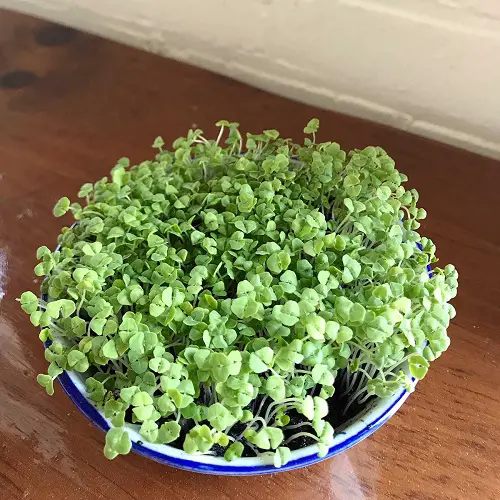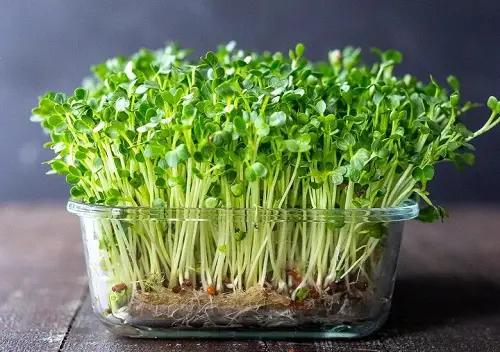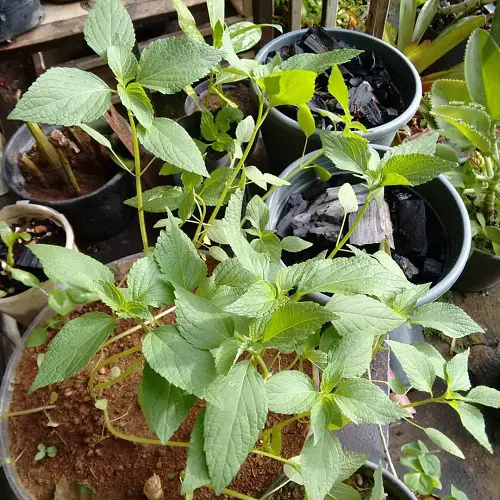Learn How to Grow Chia Seeds Plants at home to enjoy its nutrient-rich seeds in your diet organically. Growing it is similar to other sage family plants!

Growing Chia Seeds Plants is easy, not very different from other salvias. Not only will these plants greet you with beautiful flowers but they also allow you to harvest homegrown seeds in no time.
Check out our article on how to grow cucumber in unique shapes here
Chia Seeds Plants

Chia seeds (Salvia hispanica) are native to Mexico and Guatemala. They gained a lot of popularity recently due to their nutritional value and health benefits. This annual herb is a member of the Lamiaceae or mint family. These plants have an aggressive spread like many mint plants.
The blooms of chia make a spike that look-like wheat on stems that reach up to 3-4 feet tall; the little bell-shaped blossoms appear from spring to summer in a violet-blue hue.
Here are the best seeds you can start in July
Can Chia Seeds Germinate in Containers?
You can germinate chia seeds in pots to start them indoors or enclosed garden area.
- Scatter the seeds lightly in the pot, and water them frequently. A 2-4 inches deep tray would do just fine.
- Once the sprouts are grown up to 3-5 inches tall, they can be transplanted directly into the garden or 8-10 inches pot.
- Mulch the plants to retain moisture.
Check out the quirky vodka seed germination hack here
Best Planting Time
Chia seeds grow best in warm climates, for example, USDA zones 8-11. If you live in a cold climate, start the seeds in the fall. For warmer areas, you can grow chia seeds at all times of the year.
Remember, chia is a short-day plant, and the flowering and eventually seeding depends entirely on where it is grown. It will fail to flower in a season where days are longer than 10-12 hours. For example, it will start to bloom around October in Northern Hemisphere and around April in Southern Hemisphere.
The plant is not at all tolerant to cold and will die immediately in an early frost.
Learn how to grow sprouts easily here
Chia Plant Propagation

- Prepare the soil bed in the fall.
- Sprinkle the seeds lightly over a well-draining growing medium and cover them lightly.
- Keep the soil slightly moist and place them in a spot that gets bright and indirect light.
- When established, the chia plants self-sow each fall.
Have a look at the best indoor Propagation station ideas here
Requirements for Growing Chia Seeds

Light
Grow chia plants in full sun, just like you plant other flowering salvias for the best harvest. Avoid keeping the plant in the shade, as it won’t grow well. A spot that gets plenty of direct light for the most part of the day would be the best.
You can also grow this in partial sunlight, but a minimum of 4-5 hours of direct sun exposure is essential for productivity.
Soil
Chia plants are versatile and adapt to a range of soil conditions. While growing in containers, use a loamy potting mix blended. To enrich it, always add twenty five to thirty percent or more organic matter, such as well-rotted manure.
Watering
This drought-resistant plant favors regular even watering. However, if growing in a pot, it is best to water only when the topsoil goes a little dry. Also, never let the growing medium become dry completely, as it will reduce the growth.
Fertilizer
If you want an organic harvest, avoid using chemical fertilizers. Boost the harvest by adding mature compost, worm castings, or manure at the planting time. You can also side-dress the soil with organic fertilizers during the mid-growth.
Check out our article on growing microgreens here
Harvesting Chia Seeds

Harvesting the chia seeds is quite an easy task that even a novice can do. The plant gets ready to harvest within 3 to 4 months from the planting date. The harvest time begins when most petals start to fall off the bloom. If this happens, allow the heads to dry in a paper bag or drying rack.
Fill the flower heads in a paper bag, but keep them open so there will be air circulation, and wait till they dry. Once done, shake the heads in a bag and collect all the seeds for consumption.
Learn about the vegetables that grow from cuttings here
Benefits of Chia Seeds
Also known as ‘pseudocereal,’ the seeds are high in oil content with nutrients like niacin and thiamin. It also has many dietary minerals such as selenium, manganese, copper, and phosphorus.
According to a study by the Department of Dairy Technology, Pakistan, chia seed is a potential source of antioxidants with the presence of chlorogenic acid, caffeic acid, myricetin, quercetin, and kaempferol which are believed to have cardiac, hepatic protective effects, anti-aging, and anti-carcinogenic characteristics.
Another study by the Faculty of Chemistry and Chemical Engineering, Slovenia, reports that Chia seeds contain healthy omega-3 fatty acids, polyunsaturated fatty acids, dietary fiber, proteins, vitamins, and minerals. Besides this, the seeds are an excellent source of polyphenols and antioxidants, such as caffeic acid, rosmarinic acid, myricetin, quercetin, and others.
You can add these seeds to granola bars, cereal, yogurt, and baked goods or make a gelatinous substitute for eggs by mixing the seeds with water.



give me all your info